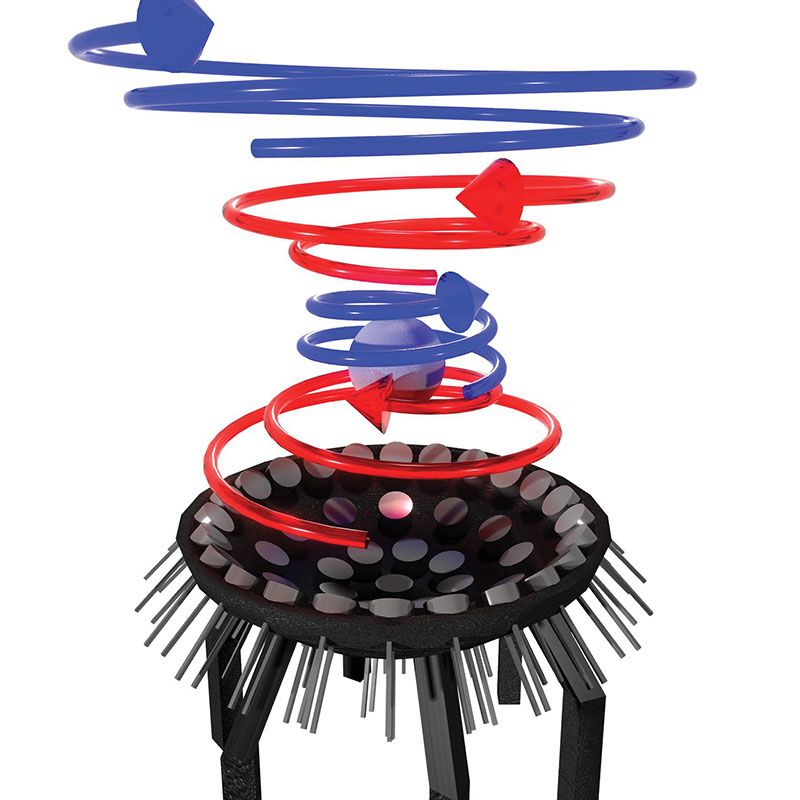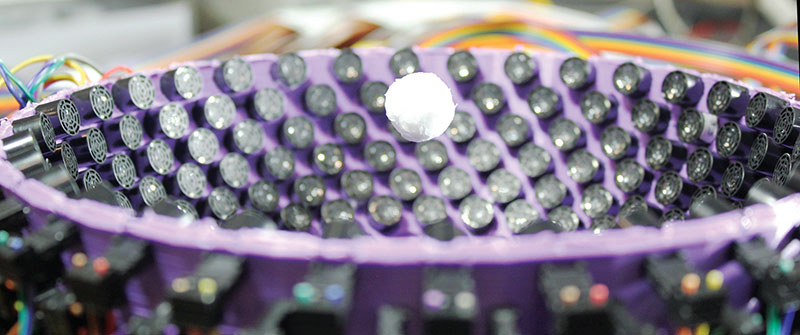Physics in the News
Spring
2018
Special Feature
Physics in the News
Rachel Kaufman, Editor
SpaceX reaches milestone
Elon Musk’s private spaceflight company SpaceX made history with the February 6 launch of the Falcon Heavy rocket, the most powerful rocket currently in operation. Not only did the Falcon Heavy successfully deliver its payload to space, but in another first, two of the rocket’s boosters landed themselves at Cape Canaveral Air Force Station, to be reused in a future flight. SpaceX’s strategy of reusing rocket parts has allowed it to offer launch services to NASA and the military at a cost significantly lower than competitors.
The payload on Falcon Heavy’s maiden launch was also a little unconventional. Musk chose to launch his personal Tesla Roadster, complete with a “driver” (a mannequin wearing a spacesuit). The Roadster is currently heading into an orbit that takes it slightly beyond Mars, an orbit in which it will (most likely) remain for quite some time. NASA’s Jet Propulsion Laboratory is tracking the car as it travels through the solar system, and you can follow the progress of “Starman,” the mannequin “driver,” at http://www.whereisroadster.com/.

New tractor beam could (someday) levitate humans
University of Bristol researchers have built an acoustic tractor beam that can capture objects much bigger than previous versions.
Acoustic tractor beams use sound waves to levitate small objects. This principle is fairly well understood (so much so, in fact, that you can build your own with about $75 in parts).
Typically, these beams can only levitate or capture objects that are smaller than the wavelength of the sound in use, because the sound waves transfer spinning motion to the object until it spins out of control and flies out of the beam. The Bristol engineers solved this problem by creating what they call acoustic vortices—essentially tornadoes of sound—that stabilize the tractor beam. This let them use a 40 kHz sound, which is far outside the range of human hearing, to levitate a 2 cm ball.
The researchers believe that such a tractor beam could someday be used to guide drugs or microsurgical implements within the body, and if it were to be scaled up, could lift even bigger objects—possibly even a human.
Read the paper: DOI: 10.1103/PhysRevLett.120.044301.
New method proposed to stop light in its tracks
Even though light travels nearly 300,000 meters per second, physicists can “stop” it by trapping it inside crystals or inside a cloud of very cold atoms. Now, researchers have proposed a third method of trapping light that makes use of “exceptional points.”
Exceptional points are points at which waves’ resonant frequencies and resonant modes coincide. (Essentially, you “cancel out” one light wave with another.) Normally, most of the light is lost at these points. Researchers at Technion – Israel Institute of Technology and Brazil’s National Institute of Pure and Applied Mathematics show that theoretically it should be possible to retain the light by using waveguides with PT symmetry.
A waveguide is much like it sounds—a physical structure that guides the movement of waves, in this case, light waves. A fiber-optic cable is an example of a waveguide.
The scientists’ work was purely theoretical, so up next is testing the theory. But already this theoretical technique may have advantages over existing light-stopping techniques. The technique could work with any wavelength of light, and in fact could even work with other types of waves, such as sound waves.
“Slow light” is thought to have applications in telecommunications and computing, but it’s a ways off. Until then, read the new paper: DOI: 10.1103/PhysRevLett.120.013901. //


1. http://www.instructables.com/id/Acoustic-Tractor-Beam/. This tutorial was designed by one of the engineers who developed the new tractor beam!
